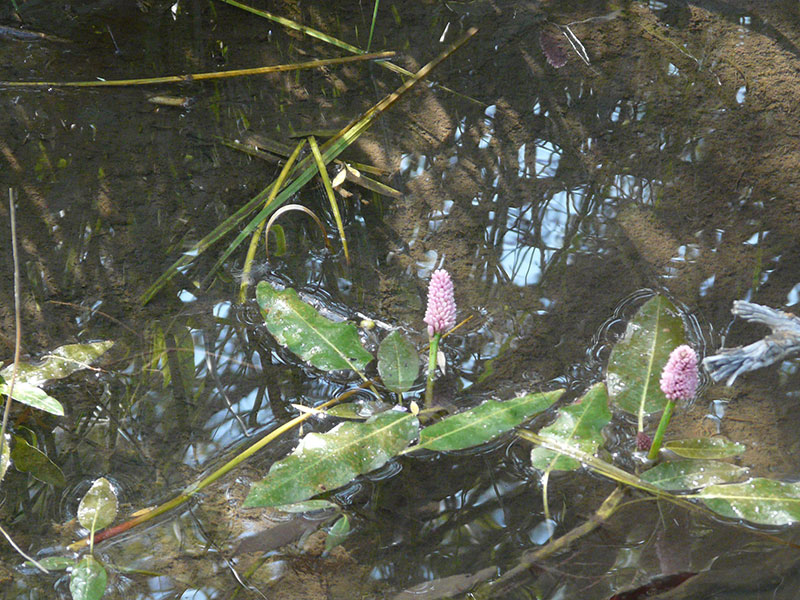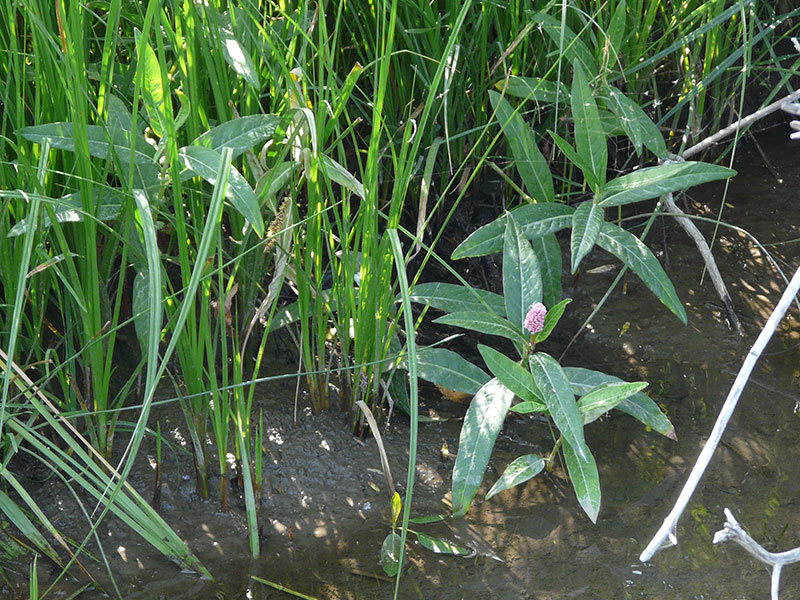Persicaria amphibia / water smartweed
- shocking pink flower clusters
- oval, leathery leaves
- either submerged or on stream or pond banks
Synonym: Polygonum amphibium
Also known as: longroot smartweed, water knotweed, water smartweed, amphibious bistort
Smartweed is immediately recognizable when flowering because of its dense spikes of shockingly pink flowers held above the water on a thick, naked stalk. Looking closer, each flower in the cluster has 5 petals. The leaves are oval and leathery and can be more than a foot long. It is found in may kinds of wet habitats, e.g. ponds, streams and marshes… sometimes even in wet meadows.
Smartweed is unusual in that it can grow both in water (either submerged or floating on the surface) or on waterlogged (soggy) but not flooded soil, e.g. on stream banks. Relatively few plants can do this. The plant’s morphology (leaf shape, hairiness etc.) are somewhat different in the two conditions and that caused confusion, at one time, as to whether these forms were actually different species.
In addition to spreading by seed (the fruit is a shiny brown achene about 3 mm long), smartweed is a perennial that can spread clonally using both rhizomes and creeping runners (stolons). In addition, the stems can root at the nodes if put in contact with the mud.
As an interesting side light, scientists in England apparently discovered that smartweed leaves growing in gold mine tailings can accumulate trace amounts of gold. The levels are “significantly” above background. Whether this can translate into anything practical – as a way to look for useful minerals, or to clean up polluted sites – is unclear, so it isn’t worth stomping around in all our wetlands to amass vast stores of the plants… yet.
| Color | |
|---|---|
| Family | |
| Blossom size | |
| Inflorescence size | |
| Inflorescence type | |
| When? | |
| Where? |


